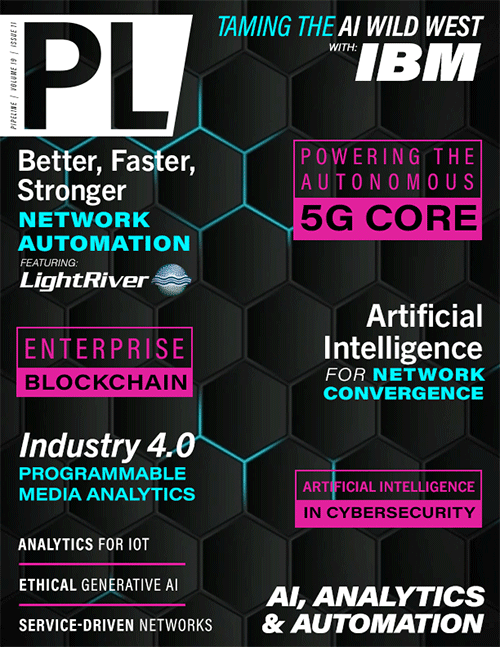Powering the Autonomous 5G Core

To compete in the 5G marketplace, communications service providers are moving beyond consumers and on to enterprise customers as their target audience. In order to deliver services and experiences tailored to enterprises, however, providers are challenged to glean even more from their 5G networks.
We are beginning to reach a point in the communications industry where the fabric of the network is not just programmable, but intelligent. Today, we are partnering with communications service providers (CSPs) to transform data center strategies and ultimately automate operations across the core. The cloud-native core of the network will evolve into 5G core network function automation, with capabilities eventually able to feed insights into the network and support optimization of policies and applications through predictive analytics. Achieving this level of analytics mastery will empower CSPs to answer the most important business questions, and identify insights critical to developing new 5G-enabled business opportunities.
Laying the foundation
Regardless of the ultimate goals with automation, the data architecture needs to be prepared. To achieve this, CSPs must rethink their automation strategy, from the infrastructure to the core
network, as well as to the applications layer. Integrating cloud-native principles into the network is one of the major areas of investment CSPs must make in their transformation journey.
Establishing the foundation with cloud-native technology will be imperative for service providers to refine their 5G Core automation strategy and ultimately deliver innovative 5G services.
A highly automated, agile networking fabric will provide the foundation for a scalable, reliable network experience. If the network is built properly, then a flow of data moving from the acquisition stage through the analytics stage can be created. Facilitating that full flow through the cycle is critical and can enable an insight-driven system similar to that of the hyperscalers. Over time, this flow will become a web of insights that has the potential to inform business decisions.
A recent survey conducted by Analysys Mason identified that the majority of CSPs are not ready for the automation, programmability, and agility requirements of 5G, edge, and new enterprise service opportunities. Yet, they are motivated. The top three drivers of CSP data center strategies include supporting new enterprise managed service opportunities (87%), supporting telco cloud (such as 5G Core) deployments (60%), and supporting edge computing deployments (47%). The findings of the survey deduce that CSPs know they need to modernize and automate to succeed in the 5G era. In this article, we will define how to achieve network automation.
Step 1: Data driven
With data becoming a key component in the digital economy, CSPs must first understand what type of data they have and its value. As the 5G network opens up CSPs to the enterprise opportunity, it will be critical for operators to harness the massive amounts of application and network data being generated to understand which of the new revenue streams—and industry verticals—to pursue. Providers will be constantly tasked to make decisions regarding these opportunities—what they want to optimize, and how to differentiate themselves in the market. To do so, service providers are employing network analytics, but as a first step they are embracing the data available to them.
As one of the initial steps of transformation, operators will embrace data-driven insights to make more informed business decisions based on trusted network data. As tools are leveraged to increase pattern detection with machine learning, operators will be able to determine predictions and make strategic decisions based on network and service behavior. A CSP who is making informed decisions using trusted historical network data is improving upon core elements of their business—namely, customer experience and operational efficiency.
Step 2: Analytics driven
Data and analytics are bringing incredible opportunity to the telecommunications industry—and they are only growing in scope. According to global consulting firm McKinsey, AI and analytics could make an estimated
total impact of $174.2B on the ![]() telecom industry. To embrace holistic automation, we must employ analytics, telecom
industry. To embrace holistic automation, we must employ as it plays a significant
telecom industry. To embrace holistic automation, we must employ analytics, telecom
industry. To embrace holistic automation, we must employ as it plays a significant ![]() role in understanding the performance of the
network and identifying critical problem areas
role in understanding the performance of the
network and identifying critical problem areas



















